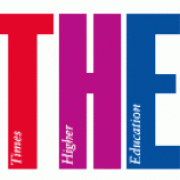You have /5 articles left.
Sign up for a free account or log in.
Think of the research and innovation powerhouses of Europe and Poland won’t be one of the countries that spring to mind. In fact, it bumps along the bottom of the continent’s innovation index alongside nations such as Bulgaria.
It is that low level of performance that prompted the Polish government to launch a nationwide innovation program, aiming to recreate the success of Silicon Valley by sending academics to work with top universities in California.
 The Top 500 Innovators program, designed to boost Poland’s low position in European innovation rankings, allows its leading academics to learn about technology transfer and entrepreneurship from “the best of the best” at the academic heart of Silicon Valley.
The Top 500 Innovators program, designed to boost Poland’s low position in European innovation rankings, allows its leading academics to learn about technology transfer and entrepreneurship from “the best of the best” at the academic heart of Silicon Valley.
With new ideas in hand, delegates are now gearing up to host a national week of activities focused on innovation in design, and alumni of the project are advising the government on science strategy.
The initiative funds Poland’s leading academics to attend nine-week courses at Stanford University and the University of California at Berkeley on product development and bringing research ideas to the market. The scientists also visit companies in Silicon Valley.
The American institutions have, between them, had a hand in launching thousands of companies.
The program is part of a bigger plan to enhance the capacity of Poland’s research and development system and bridge the gap between science and the market, explained Katarzyna Walczyk-Matuszyk, president of the Association of Top 500 Innovators, a group of about 220 alumni of the program. “There has been a lot of investment in infrastructure so now we have new laboratories and equipment that is modern,” Walczyk-Matuszyk said.
The Top 500 project is designed to match this with investment in human capital by sending 500 of the country’s brightest minds on bespoke innovation courses at top universities by 2015. Since late 2011 it has sent 320 people to Silicon Valley.
'Tail end of Europe’
Poland lies fourth from the bottom for innovation performance in Europe, above only Romania, Latvia and Bulgaria, according to the 2014 European Union Innovation Union Scoreboard. It also ranks at the “tail end of Europe” on research and development expenditure and patents, Walczyk-Matuszyk added. “In 2020 we will not be one of the last,” she said.
The Association of Top 500 Innovators is now working on proposals for government on how to improve science and innovation legislation in Poland.
Walczyk-Matuszyk explained that the initiative has helped to change the mentality of Polish researchers and technology transfer specialists. She said: “In Poland people are very individual and concentrate on their own work rather than relying on group work… In America we have learned to be open and how to cooperate.”
She continued: “In California they are saying it is O.K. to fail. In Poland we do not have such a saying, it is rather the opposite, so people are not willing to take risks.”
Experiencing life in Silicon Valley has also given academics the confidence and know-how to start commercialization projects, as well as allowing them insights into the venture capital system and international networking. “People from different universities and sectors [have] started working together [to create] better products, services and processes,” she added.
One such network focuses on design thinking, a method of design that revolves around understanding the needs of users. Back in Poland a group of alumni from the program decided to develop this area nationally and set up a series of design thinking spaces to test ideas across the country. Facilities now exist in the cities of Bydgoszcz, Krakow, Gdańsk and Łódź, said Walczyk-Matuszyk.
In November, Poland will host a week of design thinking activities involving nine universities. A series of conferences, workshops and seminars will reach 1,200 people, said Walczyk-Matuszyk.
For Stanford, being involved in such a scheme offers opportunities for international research collaboration, explained Michael Lepech, assistant professor in the department of civil and environmental engineering and academic director of Stanford’s Top 500 course. At Stanford the participants are “embedded” within a research group related to their area of expertise. “These close working relationships have been a natural foundation for continued international research collaborations,” Lepech said.
Jeffrey Rosenthal, executive director of the Center for Executive Education at Berkeley, which hosted the Top 500 program, said that being involved helped the U.S. university to learn, too. “[This helps] us sharpen our own understanding of how innovation occurs around the world and how to implement innovative thinking to create products and business models that are different in a useful way.”







